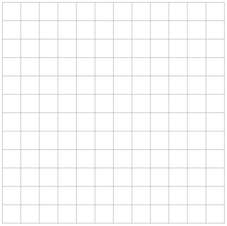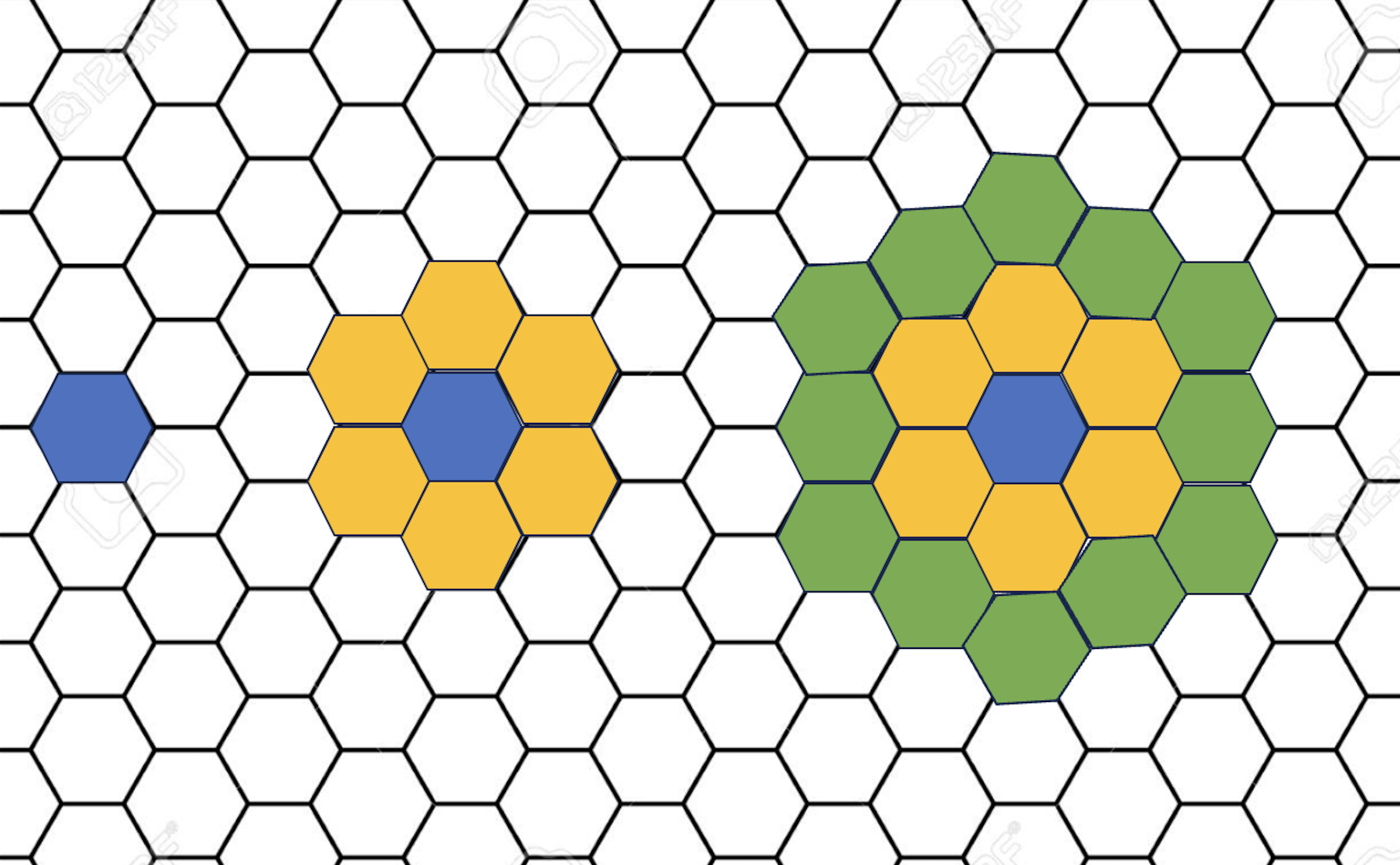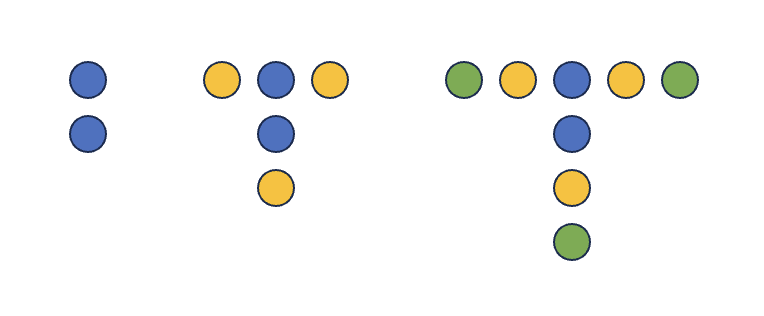Discrete Math for Data Science
DSCI 220, 2025 W1
September 30, 2025
Announcements
Induction
Last Demo
This is a tromino:
This is a \(n\) by \(n\) deficient grid:
Claim: Every \(2^n\) by \(2^n\) deficient grid can be tiled with trominos.
Tile Work
Claim: Every \(2^n\) by \(2^n\) deficient grid can be tiled with trominos.
Proof: Line 1:
Line 2:
Small case(s):
Tile Work
Claim: Every \(2^n\) by \(2^n\) deficient grid can be tiled with trominos.
Proof continued… Inductive case:
Summations
Trick 5: Reindexing
Story. You only log every 3rd data point (rows 3, 6, 9, …).
The cost for row \(i\) is \(2i+1\).
Question. What is the total cost up to row \(n\)?
Trick 6: Double Sum
Story. Each item \(i\) must be compared with all later items \(j\ge i\). The pairwise cost is \(c_j = 4j+1\) (depends only on the later index).
Problem.
\(T = \displaystyle \sum_{i=1}^{n}\;\sum_{j=i}^{n}\,(4j+1)\)

Sequences
Hex Flowers
Consider the sequence of images below. How many cells are in image \(n\)? (Call it \(C_n\))

\(C_0 =\)
\(C_1 =\)
\(C_2 =\)
\(\ldots\)
\(C_n =\)
Hex Flowers
\(C_0 = 1\), and \(C_n = C_{n-1} + 6n, \forall n > 0\)
But what does this function mean? We need a closed form!!
Solving Recurrences
“unroll” the recurrence by substituting previous expressions.
See a pattern, and generalize it using \(k\).
Set the generalized term equal to the base case term.
Substitute base case and solve sums.
T
Consider the sequence of images below. How many dots are in image \(n\)? (Call it \(T_n\))

\(T_0 =\)
\(T_1 =\)
\(T_2 =\)
\(\ldots\)
\(T_n =\)
T
\(T_0 = 2\), and \(T_n = T_{n-1} + 3, \forall n > 0\)
But what does this function mean? We need a closed form!!
T
But how can we be sure our closed form is correct?
Claim: The closed form solution to the recurrence \(T_0 = 2\) and \(T_n = T_{n-1} + 3, \forall n > 0\) is \(T_n = 2 + 3n\)
Toothpicks
How many toothpicks in an \(n\cross n\) grid made of toothpicks?
Draw the sequence:
Find the recurrence:
Solve the closed form for the recurrence: